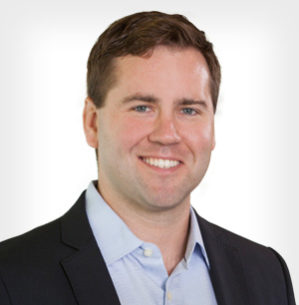 One of the main reasons why I decided to pursue a graduate degree was to learn how to apply behavioral science concepts within the insurance industry. In Spring 2019, the Mack Institute’s Collaborative Innovation Program (CIP) allowed me to do just that. That semester, my CIP team worked with one of the largest insurance companies in Greece, and leveraged behavioral insights to better understand the purchasing motivations of its customers.
One of the main reasons why I decided to pursue a graduate degree was to learn how to apply behavioral science concepts within the insurance industry. In Spring 2019, the Mack Institute’s Collaborative Innovation Program (CIP) allowed me to do just that. That semester, my CIP team worked with one of the largest insurance companies in Greece, and leveraged behavioral insights to better understand the purchasing motivations of its customers.
Our team was a bit unique in that we were all students from Penn’s Masters of Behavioral and Decision Sciences program. That common interest fostered an important positive group dynamic. It was also beneficial that our main client contact was well-versed on the topic, which helped us gain traction with the partner’s management and facilitated collaboration between both parties. Lastly, I was fortunate to have insurance industry experience, which again made this project personally relevant to me, and allowed us to navigate any unfamiliar insurance-related concepts that arose.
We had a solid team, but we still needed to determine our path to complete the task at hand. We quickly found out at the onset that determining the project’s scope was a formidable challenge. Essentially, we needed to take a vastly broad topic and decide how to implement it in a specific way for a multifaceted organization. For our group, this also involved coordinating the collection of data by means of a survey in Greek (we were mainly English speakers), analyzing what we gathered, recommending strategies, and presenting our findings to client executives — all within a semester. As you can imagine, staying organized and sticking to a plan proved to be key.
Ultimately, we determined that we didn’t need to solve behavioral science for the client. Instead, we provided the company with a “sampler,” if you will — insight regarding a handful of key consumer motivators, upon which they can build by researching each one in greater detail. This project made us realize that employing behavioral-based principles within an organization should be a process that evolves over time instead of being a one-shot deal. Hopefully our work will continue to be valuable to the partner.
CIP allows participants to directly apply theories we’ve learned in the classroom to a real-world environment. My team was able to observe first-hand the nuances of scientific field research in a corporate setting. I’d describe it as the delicate balance of academic rigor and industry practicality. Considering legal challenges, meeting client needs, and navigating how to work with a partner on another continent were all factors in maintaining our credibility.
All told, my CIP experience leaves me with the helpful applied insight that I had been seeking — thanks to the opportunity to explore the ways insurance companies can utilize an innovative approach like behavioral science to better understand the risk-related decisions their customers make.
Sign up here for email notifications about CIP recruitment. Read about more students’ CIP experiences here.
About the Author
John Thiel is currently enrolled in the Masters of Behavioral and Decision Sciences (MBDS) graduate program at the University of Pennsylvania. For the past five years, John has worked for General Reinsurance in Philadelphia as a Senior Underwriter, focusing on casualty risks as well as reinsurance programs for insurance carrier clients. Prior to his time at Gen Re, John spent six years at Liberty Mutual in both underwriting and claims roles. He earned his bachelor of arts from Lafayette College.



